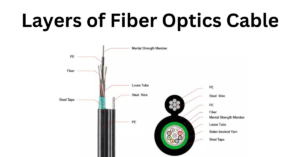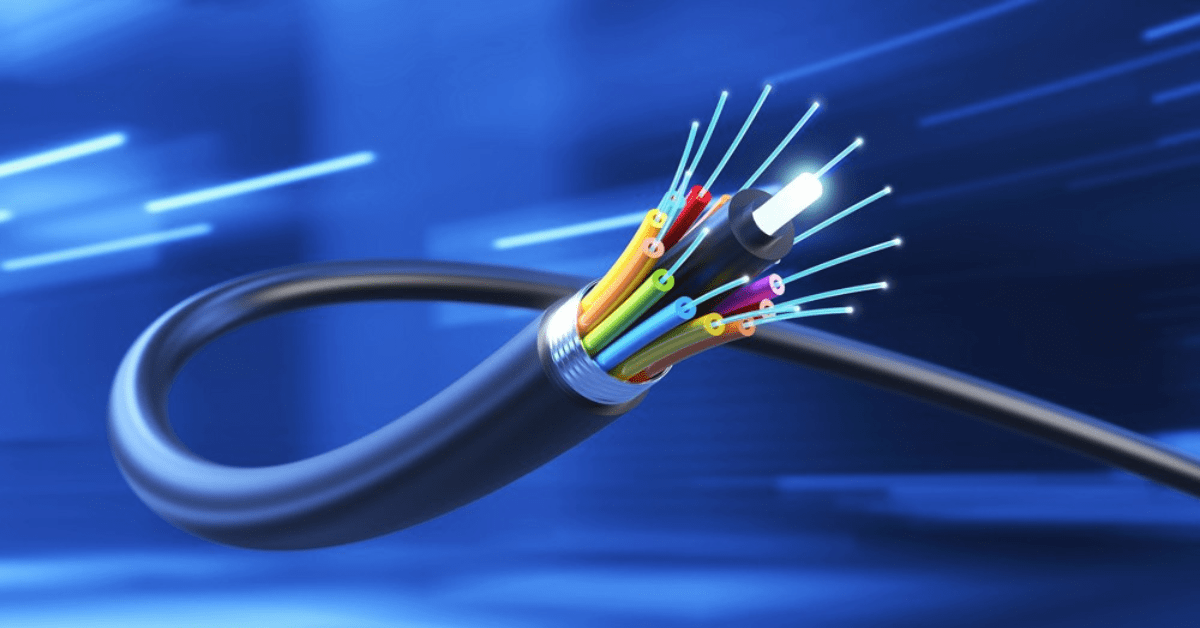Introduction
The basis of contemporary telecommunications, fiber optic technology, has fundamentally changed communication. The transition to fiber optic connections in residential settings offers faster internet and a revolution in how we perceive connectedness. By utilizing the speed of light, this technology transfers data at previously unheard-of speeds, greatly outpacing residential cable and regular internet connections.

Advantages in Residential Areas
Fiber optics in residential contexts has many benefits. These cables have far more bandwidth, so you may connect numerous devices simultaneously without sacrificing quality or speed. Fiber optic cables offer a stable and dependable connection because they are less susceptible to interference than conventional copper connections. This dependability is invaluable in our increasingly digital age, where constant internet access has become a daily must.
Pre-Installation Considerations
Assessing your home’s fiber optic technology suitability is critical before installation. Not every structure is instantly suitable for this update; occasionally, small adjustments are required. During this evaluation phase, it is essential to have a complete grasp of the network infrastructure, layout, and the need for extra components in your home.
Choosing the Right Fiber Optic Provider
Selecting a supplier involves more than cost. It includes dependability, the caliber of customer support, and the range of products available. You may choose the best local supplier for your home needs by thoroughly investigating them, comparing their plans, and reading user reviews.
Types of Fiber Optic Cables
Single-mode and multi-mode fiber optic cables are the two main varieties. Higher bandwidth capacities are available with single-mode fibers, which are appropriate for long-distance transmission. Multi-mode fibers, on the other hand, are typically utilized in residential areas for shorter distances.
Selecting Suitable Cables for Home Use
Your unique needs will determine which fiber optic cable is best for you. This selection is heavily influenced by factors such as the bandwidth requirements of your home and the installation distance. Larger homes or more complicated systems may require single-mode connections, even though multi-mode cables may be enough for most domestic purposes.
The Installation Process
Installing fiber optic cables is a precise operation that requires a few crucial steps. Accuracy is essential to a good outcome Throughout the installation process, from physically laying the cables to calculating the route.
Safety Precautions and Best Practices
It is impossible to stress safety enough when installing. It’s critical to understand best practices, including ensuring cables are routed away from electrical wires and avoiding abrupt bends. As the manufacturer advises, following safety protocols and wearing the proper protective gear is not negotiable.
Tools and Equipment for Installation
For an installation to be successful, the correct tools must be used. Tools for splicing, testing, and cable cutting are all included in this kit. An efficient installation depends on the user’s proficiency with these instruments safely.
Equipment Handling and Safety
Careful handling of fiber optic equipment is required to avoid cable damage and guarantee the operators’ safety. It is essential to comprehend the delicate nature of fiber optic cables and the significance of handling them carefully to avoid breaking them.
Understanding Network Configuration
Fiber optic network setups can be different from conventional setups. It is essential to thoroughly understand various network topologies and how your home setup might benefit from them.
Network Topology in Residential Areas
In this section, we will investigate a variety of networks.
Options such as mesh, ring, or star topologies assist you in selecting the ideal match for your house. Every topology has particular benefits and works well for various house designs and connectivity needs.
Connecting to Internet Service Providers
Fibre optic cable connections to your ISP are an essential first step. This section describes the setup procedure and how to make sure your ISP’s services are compatible with fiber optics.
Setting Up ISP Connections
Using fiber optic cables to configure your modem and router is necessary in setting up a connection with your ISP. You may need to seek expert help or possess some technical knowledge, particularly if you are unfamiliar with network configurations.
Troubleshooting Common Issues
Despite careful installation, problems can still occur. You will be able to recognize and address frequent issues in this section of the article, which will help you save time and feel less frustrated.
Identifying and Solving Installation Problems
Learn how to solve connectivity, sluggish speeds, and signal loss difficulties. This entails assessing signal strength, verifying connections, and determining when to contact a specialist.
Cost Analysis and Budgeting
It’s critical to comprehend the costs associated with deploying fiber optics. An extensive review of possible expenses and practical budgeting techniques will be given in this part.
Estimating Installation Costs
The installation of fiber optics can come with a wide range of expenses. Several variables come into play, including the kind of cable, how long the installation takes, and if expert services are required. This section will help you comprehend these expenses and adjust your budget appropriately.
Legal and Compliance Aspects
When installing fiber optics in residential locations, it is important to know local rules and safety norms. This guarantees compliance with regulations and keeps you out of trouble with the law.
Understanding Local Regulations
Familiarizing yourself with local building rules, required permits, and safety standards is important to ensure your installation complies with all applicable laws.
Hiring Professional Installers
Hiring expert installers could be the best option for intricate installations or situations where accuracy is crucial.
When to Hire Experts
In this section, you’ll learn when hiring professionals for installation services is best. Hiring experts is appropriate for complex network configurations, large-scale installations, or a lack of technical experience.
Choosing Reliable Installation Services
Choosing the appropriate expert service is essential to a successful installation. Seek out certified installers with a history of successful installs and good ratings.
DIY Installation Tips
DIY installation is a fulfilling task for individuals who prefer manual labor. It does, however, entail unique dangers and complications.
Step-by-Step DIY Guide
This all-inclusive manual will take you step-by-step through the DIY installation process. For a seamless and effective installation, adhere to the following instructions.
Risks and Rewards of Self-Installation
It’s critical to comprehend the possibilities, including harm to your house or the wires. Compare these dangers to the satisfaction and possible financial savings of doing it yourself.
Future-Proofing Your Installation
Ensuring your fiber optic installation stays current with technological advancements is critical. This entails taking scalability and prospective upgrades into account.
Upgrading and Scalability
Find out how to plan your installation for future updates by selecting cables and equipment to keep up with technology developments.
Embracing Technological Advances
Learn about the most recent advancements in fiber optic technology and how they can improve the performance of your home network. Always be ready to adjust to new developments.
Impact of Fiber Optics on Home Value
Installing fiber optic: The value of your home can be considerably impacted by cables. This technology is an investment in the future and a benefit of the present.
Resale Value Considerations
This section will examine how adding fiber optics to your home can increase its appeal to prospective purchasers and market value. It will review features like dependable connectivity and fast internet that appeal to contemporary homeowners and how they affect your home’s market value.
Eco-Friendly Aspects of Fiber Optics
Beyond efficiency and speed, fiber optics have positive environmental effects. This essay section will cover the eco-friendly features of fiber optic technology.
Sustainability in Cable Installation
Discover how fiber optics, instead of conventional cabling methods, use less energy and leave a lower environmental impact, helping to create a more sustainable future. The ecologically friendly materials utilized in fiber optics, as well as the long-term advantages of using such a sustainable technology, will be covered in this section.
Community and Neighborhood Impact
The neighborhood and community may benefit from the installation of fiber optics. This section will look at the wider effects of improving local connectivity.
Collaborative Installations
Communities may collaborate to create group installations that save expenses and increase productivity. The benefits of community-driven projects and how they promote increased social cohesion and connectivity will be covered in this section.
Conclusion
In closing, the paper will summarize the main ideas and give an outlook for home fiber optics. Because this technology is always changing, it is essential to stay updated if you want to get the most out of your installation. This section will stress the significance of staying current with technology and explain how fiber optics invest in your home’s connectivity and value over the long run rather than merely a short-term fix.

